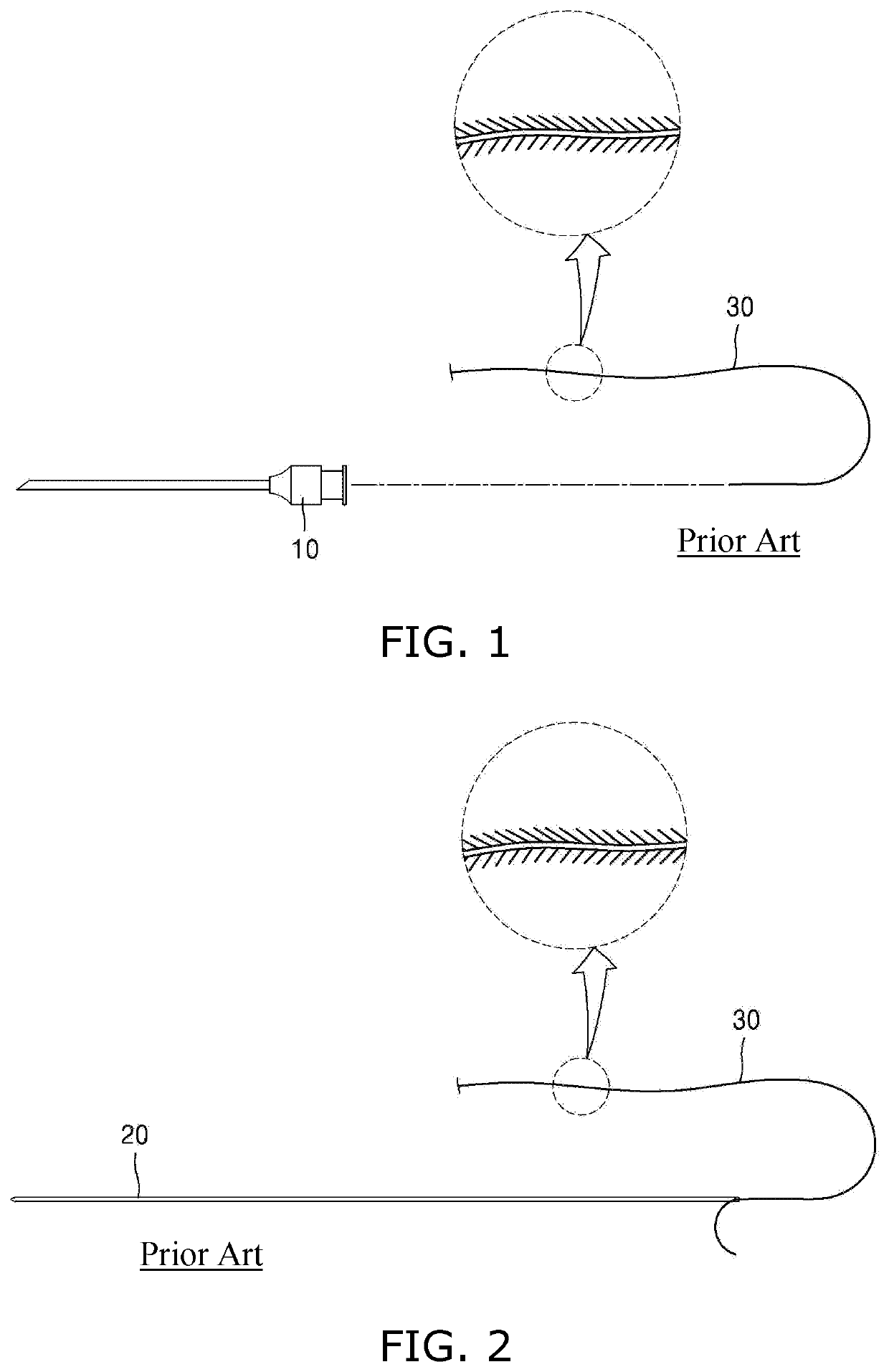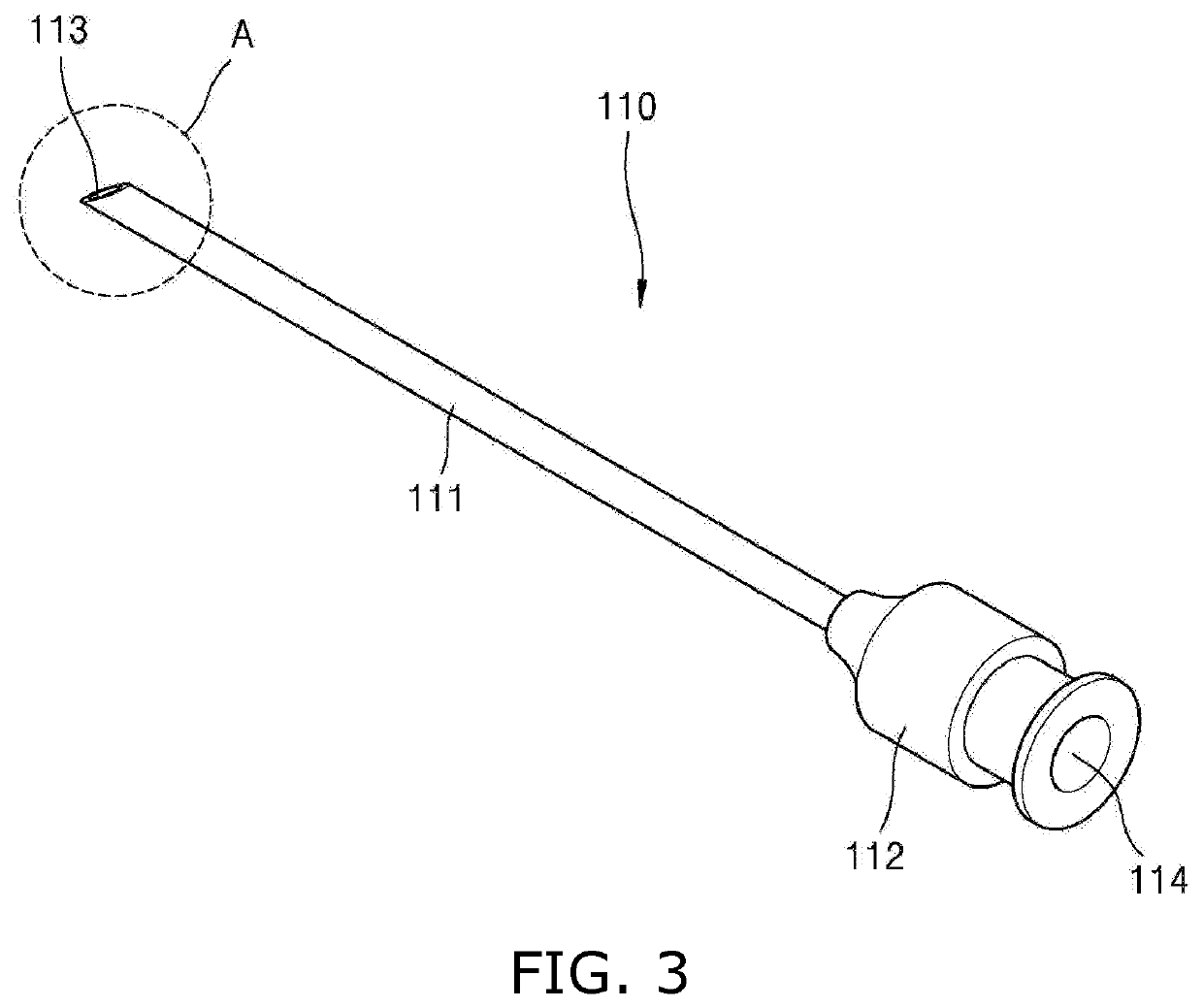Lifting surgical instrument having branch point
a surgical instrument and branch point technology, applied in the field of surgical instruments, can solve the problems of increasing the difficulty of surgical scars, and increasing the time required for invasive methods
- Summary
- Abstract
- Description
- Claims
- Application Information
AI Technical Summary
Benefits of technology
Problems solved by technology
Method used
Image
Examples
Embodiment Construction
[0033]A lifting surgical instrument 100 according to the present invention is used to form a thread 131 without a cog and a barb in a ring shape under the skin and to perform a lifting surgery. The lifting surgical instrument 100 relates to a lifting surgical instrument having a branch point, which enables the front end of a sheath 110 to be disposed at a desired location in a subcutaneous tissue by using an indicator 120 and uses the sheath 110 as a branch point so that a thread 131 without a cog and a barb can be formed in a ring shape under the skin.
[0034]The lifting surgical instrument 100 according to the present invention is a surgical instrument for a surgical method which has been newly conceived by the applicant of the present invention. The newly conceived surgical method is configured to form the thread 131 without a cog and a barb in a ring shape at a desired location within the tissue and to lift a droopy tissue, unlike the conventional lifting surgical methods configur...
PUM
 Login to View More
Login to View More Abstract
Description
Claims
Application Information
 Login to View More
Login to View More - R&D
- Intellectual Property
- Life Sciences
- Materials
- Tech Scout
- Unparalleled Data Quality
- Higher Quality Content
- 60% Fewer Hallucinations
Browse by: Latest US Patents, China's latest patents, Technical Efficacy Thesaurus, Application Domain, Technology Topic, Popular Technical Reports.
© 2025 PatSnap. All rights reserved.Legal|Privacy policy|Modern Slavery Act Transparency Statement|Sitemap|About US| Contact US: help@patsnap.com



